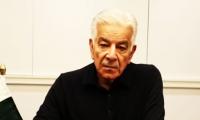As we observe the World Press Freedom Day today (May 3), Pakistani media are facing new challenges. No doubt, it has a long history of fighting against suppression and anti-media laws. Some of the old tactics of censorship and press advice are now being used in a new form. With the growth of electronic media and invasion of social media, the challenge to draw the line between freedom and responsibility become even harder.
Pakistan’s rating on World Press Freedom Index improved in 2016, as compared to 2015, but it is still among the five most dangerous countries for reporting. Cases of over 100 journalists killed, mostly in the line of duty, remain unresolved, placing the country among leading nations on the Impunity Index. Only four cases went to courts and there were only two convictions. There are still around 24 such laws in the country that could be used against newspapers, TV channels or journalists, who could be convicted and sent to jails.
The ‘press advice’ has now been replaced with ‘media advice’ and it has now become legal too.Pakistan Electronic Media Regulatory Authority (Pemra) formed in 2002 under an Act of Parliament, is controversial. It regulates private TV channels, but its chairman and members are nominated by the government. It often issues notices to TV channels in its own interpretation of the Pemra law. But, the bigger problem the channel has to face is the undeclared bans that are conveyed by the unknown people to cable operators to put one channel or the other off air, or change its number on TV sets without following any lawful procedure.
Pressure on the print and electronic media also comes in the form of cut in advertisements, as it is still being used as leverage by the government. That is why, some journalistic circles call the Ministry of Information as the ‘ministry of disinformation’ and believe there is no need for such ministry.
Political parties and pressure groups also attack the media. In the recent past, we have witnessed incidents in which channels’ DSNGs (Digital Satellite News Gathering) come under serious attack. In some cases, the DSNG drivers and staffers had also been killed or got injured. Female journalists still face cases of physical harassment.
The social media, which is often called an ‘unedited media’, is completely uncontrollable. In the absence of high professional standards and editor’s institution, the mainstream media at times uses its material ‘unedited’ and put themselves in trouble. There is a need for strong editorial boards, both for news and programmes.
Journalists working in different parts of the country are facing different kinds of challenges. Due to threats, many of them have to leave their homes, cities and provinces. It badly affects their growth as professional and they continue to remain in agony. In the past few years, some media related ‘non-governmental organisations (NGOs) had helped some of these journalists, but due to constant threat, situation is far from satisfactory.
Today, the challenge is not merely for journalists working in the field but also those sitting in the newsroom, who very often receive threatening calls if one item or the other is not aired or given due coverage.
Situation in Balochistan is worst, followed by Gilgit-Baltistan, Federally Administered Tribal Areas (Fata), Khyber-Pakhtunkhwa and prime media centres in Lahore and Karachi. In Islamabad, journalists often face immense pressure because of working in the federal capital.
It has generally been said and believed that Freedom of the Press, comes with responsibility and this is the accepted norms. We often talk of the second part of Article 19, which talk of reasonable restrictions and ignored the first part i.e. Press is free to report. Question is, can they freely report ? Secondly, Article 19-A, call for access to information and people’s right to know. Do we have access to information. If we had such kind of access, many ethical questions would have been resolved.
Because of the question regarding ‘conflict of interest,’ I did not want to comment much on ‘Dawn Leaks,’ except that the issue should have been send to Press Council of Pakistan, comprising members of all the media stakeholders including the All Pakistan Newspapers Society (APNS), Council of Pakistan Newspaper Editors (CPNE) and the Pakistan Federal Union of Journalists (PFUJ). World over it is the press council that deals with such complaints. In November last year, the council held a meeting and took a position that it was surprising that neither the government nor any other party concerned approaches the press council.
Now, we all await the outcome of its report, which must be made public in all its manifestations. But, for the first time, in Pakistan’s media history, the information minister and Press Information Officer had been held responsible for ‘not doing much’ to stop the news from getting published, which itself questioned the amount of freedom of the press we had. Had they been held responsible for leaking or planted the news, the action could have been justified.
Another case which I want to discuss here is of Pemra decision to ban the interview of Saleem Saafi with the former spokesman for Tehrik-e-Taliban Pakistan (TTP) Ehsanullah Ehsan, on the pretext that it tantamount to glorifying terrorists. Interestingly, when the man was in the TTP, the media whether out of fear or pressure often aired or print his statement, interviews. But when the man surrendered and regretted his past, he had been banned.
What was Saleem Saafi’s fault. Like any journalists, he too tried and succeeded in getting access and interviewed him. We as journalists know that in such cases access is not possible without the consent of the relevant quarters.
Had Pemra also banned his video confession, released or leaked by the official quarters, it would have some justification in disallowing Saafi’s interview.
In journalism, there are some ethical considerations in interviewing a person in custody for two reasons. (1) The person you interview may not speak with free mind and tomorrow, he could reject the interview being taken under duress, like suspects often do in the case of confessional statements or JIT. (2) Since journalist got access through official source, he or she often knows or is told about certain restrictions, which restrain him from interviewing him with an open mind.
Even then, a journalist often looks for such interviews because of its news value and this practice been followed the world over. A true journalist is always hungry for the news.
What position Pemra had taken on scores of video confessions, majority of which channels aired without quoting any source. The most controversial one was that of MQM militant Saulat Mirza from the death cell.
Dr Asim Hussain, a close associate of former president, Asif Ali Zardari and one of the three suspects of Dr Imran Farooq murder case. It was told that the last interview was arranged after the reporter concerned allegedly paid some money to jail officials.
Mirza’s video statement was the most serious and broke all ethical norms as neither any media dare to disclose the source nor any official inquiry was held as to how and when it was recorded and by whom.
Its worst form we saw in the world when all civilised world remained silent over the ‘live execution, of former Iraqi president, Saadam Hussain.
In Ehsan’s case, I did not find anything apologetic or sympathetic from Saleem Saafi. He has not changed his style of asking questions in the interview. He is certainly not as aggressive as Iftikhar Ahmad or may be as sharp as Hamid Mir, but has style of his own and has strong viewership.
Now, for instance, can the media or should media interview the person who is facing charges of high treason, and present him as a hero or saviour.
As a journalist, yes I would like to interview the former army chief and ex-president, because he has the news value. But, from the Pemra’s perspective is it not tantamount to glorifying someone who had abrogated the constitution of Pakistan.
In many ways, I find Pemra, another form of Press and Publication Ordinance, when it comes to a press advice or imposing censorship by interpreting clauses in their own way. I would certainly say that the case is testing times for the media. It can only protect and defend its freedom by following high standard of professionalism and responsibility.
Regulations are important provided they do not confront the basic standard of journalism and freedom with responsibility. But, we are being asked to be responsible without allowing access to information in accordance with the spirit of Article 19 and Article 19-A, of the Constitution.
Division within the media at all levels and rising corporate culture has brought new challenges for professional journalists.
I wish someone like the late Zamir Niazi, would be alive to record media history of post-2002 era of electronic media.
This writer is a senior columnist and analyst of GEO, The News and Jang
Twitter: @MazharAbbasGEO
Due to breakdown, power was cut off in Mall Road, Jhikagali, Bhurban, Expressway and other areas
Demonstrators criticise introduction of a token system at the Kuntani border
He says bunkers would be demolished and weapons collected to restore peace to the area
Special Judge Central Shahrukh Arjumand conducts hearing at Adiala Jail on Friday
PN flotilla was led by Commander 14th Destroyer Squadron, Commodore Muhammad Umair
ATC Special Judge Amjad Ali Shah approves her bail until January 13







